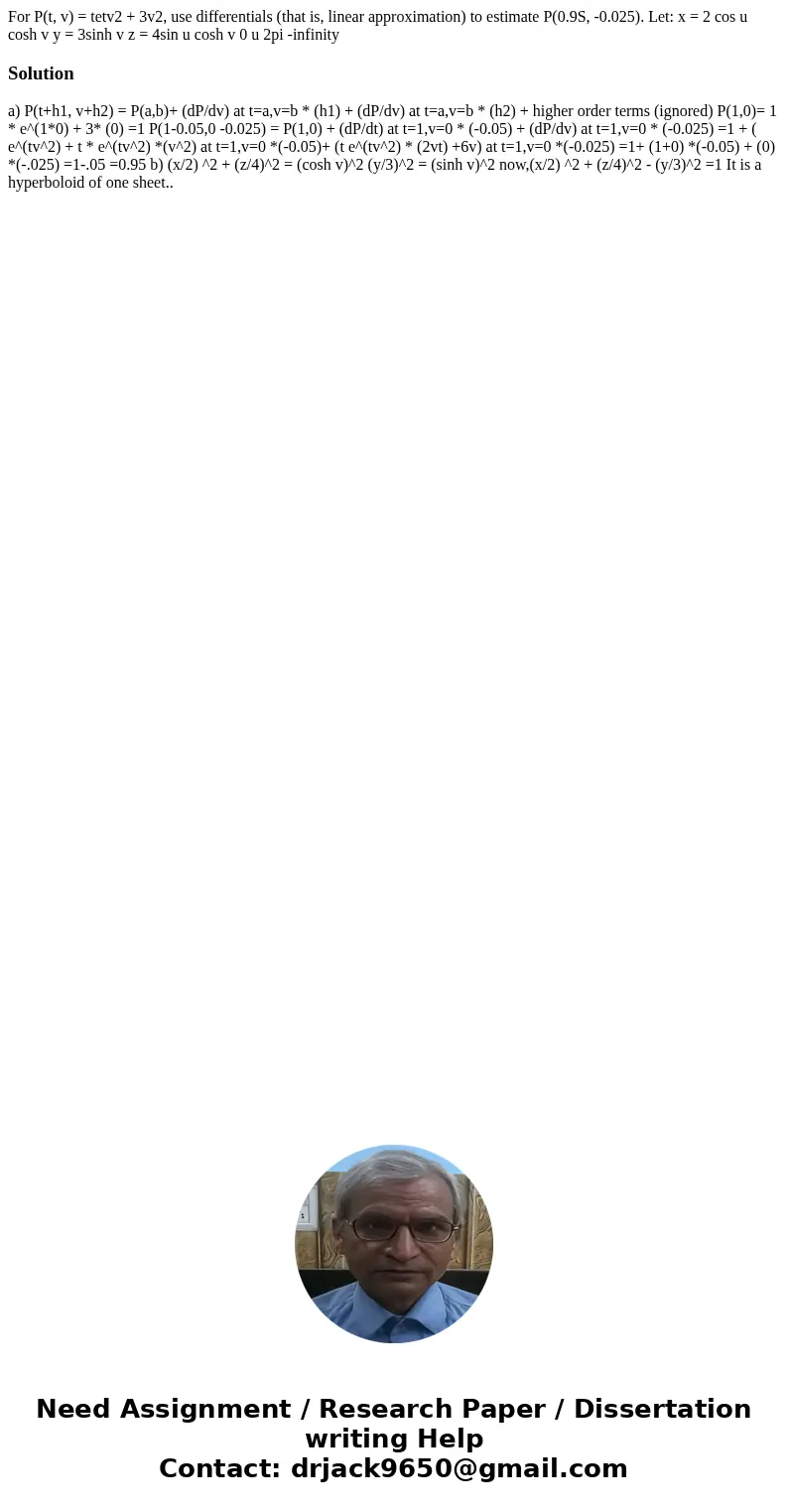For Pt v tetv2 3v2 use differentials that is linear approx
For P(t, v) = tetv2 + 3v2, use differentials (that is, linear approximation) to estimate P(0.9S, -0.025). Let: x = 2 cos u cosh v y = 3sinh v z = 4sin u cosh v 0 u 2pi -infinity 
Solution
a) P(t+h1, v+h2) = P(a,b)+ (dP/dv) at t=a,v=b * (h1) + (dP/dv) at t=a,v=b * (h2) + higher order terms (ignored) P(1,0)= 1 * e^(1*0) + 3* (0) =1 P(1-0.05,0 -0.025) = P(1,0) + (dP/dt) at t=1,v=0 * (-0.05) + (dP/dv) at t=1,v=0 * (-0.025) =1 + ( e^(tv^2) + t * e^(tv^2) *(v^2) at t=1,v=0 *(-0.05)+ (t e^(tv^2) * (2vt) +6v) at t=1,v=0 *(-0.025) =1+ (1+0) *(-0.05) + (0) *(-.025) =1-.05 =0.95 b) (x/2) ^2 + (z/4)^2 = (cosh v)^2 (y/3)^2 = (sinh v)^2 now,(x/2) ^2 + (z/4)^2 - (y/3)^2 =1 It is a hyperboloid of one sheet..
 Homework Sourse
Homework Sourse